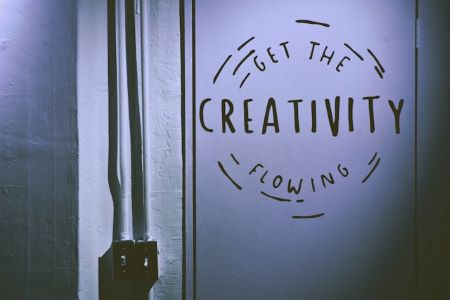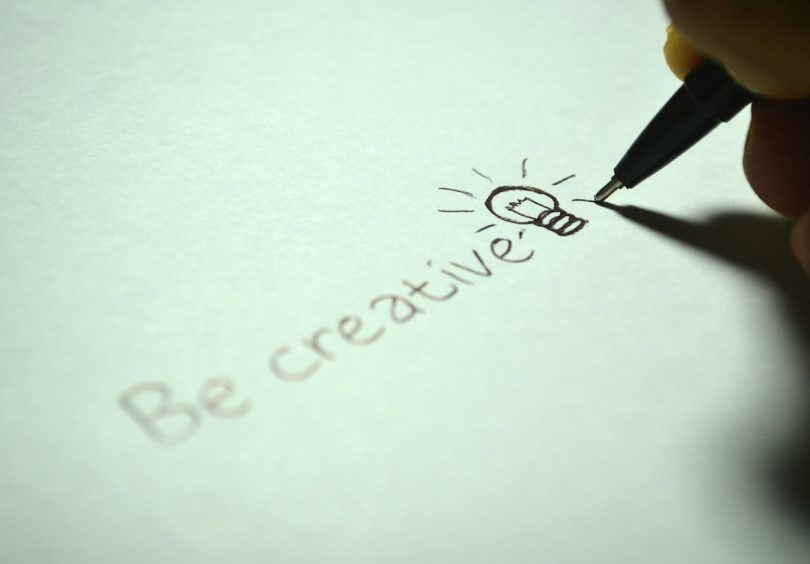In our evolving economy, focus has become the most precious currency, with our attention constantly in demand by external forces. Simultaneously, technological advances have democratised creativity, and authenticity has been increasingly diluted, as mass production and imitation blur the lines between true originality and surface-level creation. How do we futureproof the creative mind to stay one step ahead?
It was a grey afternoon around 3 PM in Northwest England, circa 1991. I was in a history class at Brownedge St. Mary’s RC High School, gazing out the window, in part entranced by the beads of sweaty teenage condensation clinging to the single-glazed panes, but also captivated by something deeper—something distant yet somehow within reach: the inner landscape of my escaped reality. Suddenly, out of nowhere, a streak of white darted across my peripheral vision, followed by a sharp tapping sound and bursts of laughter. The substitute teacher, clearly frustrated with my daydreaming, had thrown a piece of chalk to snap me out of a blissful and, I’d argue, highly productive neural DMN bath. Fast forward 33 years, and here I am, in Paris, now a therapist and coach for creative minds, encouraging them to embrace the very thing for which I was once reprimanded.
What is Attention?
Attention is a complex cognitive process involving several brain regions:
- The Prefrontal Cortex: Plays a key role in executive control and decision-making, helping to direct attention.
- The Default Mode Network (DMN) and Dorsal Attention Network (DAN): These networks help shift between focused attention and daydreaming or internally directed thought.
- The Parietal Cortex: Involved in orienting attention and spatial awareness.
- The Thalamus: Acts as a relay centre, filtering sensory information before it reaches higher cortical areas.
- The Anterior Cingulate Cortex (ACC): Regulates emotional responses and effort-related decision-making, influencing attentional control.
Creativity is far from a singular trait or skill—it’s a complex interplay of cognitive processes, emotional states, and neural networks. Research shows that key brain regions, like the prefrontal cortex and the DMN, are integral to the creative process.

The DMN, which activates during moments of rest or mind-wandering, is responsible for generating ideas and connecting disparate concepts. It’s in these seemingly unproductive moments that creativity often sparks.
Simultaneously, focused and intentional thinking, governed by the prefrontal cortex, helps creatives refine their ideas and bring them into the world. The most successful creative minds balance spontaneous idea generation with disciplined execution. Finding fresh ideas often involves piecing together or linking existing concepts, rather than conjuring something entirely new. This delicate dance is becoming harder to maintain as external demands on our attention increase. Practices like hypnosis and hypnotherapy can be harnessed to sharpen focus on beliefs, ideas, and concepts within the subconscious mind, potentially enhancing attention.
When clients or companies come to me, they often feel like something is missing or not working at its best. They are creative and, for the most part, successful—but they do not feel it.
Something feels missing.
From a therapeutic perspective, the challenges we encounter are multiple but generally fall under the following categories:
1. Behavioural & Emotional
Behavioural responses that serve to anaesthetise or distract from a core emotional or existential problem that has not been resolved, or avoidance behaviours such as procrastination linked to perfectionism.
2. Cognitive
Beliefs around “mood states” for which the creative mind has cultivated an identity—e.g., “The Tortured Artist” or “I can only work well under a painful level of pressure.” In essence, the belief that one must suffer to create authentically.
3. Attention, Focus & Motivation
- Creative Distraction: While attention is often considered vital for productivity, creative minds benefit from moments of distraction or reduced focus. This aligns with the idea that mind-wandering and spontaneous thought contribute to creativity. However, in today’s climate, obtaining true distraction is difficult, as distraction now equates to complete disconnection or pseudo-distraction (i.e., observing others’ creations when not creating), which leads to confused cross-pollination.The ability to ideate and execute requires cognitive flexibility, yet many creatives now find themselves unable to sustain the deep work required to bring their best ideas to life. Without focus, the insights generated by the DMN may never come to fruition. This problem is further entangled by the rise of AI-generated content and the ethical machinations surrounding its integration.
- Intrinsic vs. Extrinsic Motivation: As described in Teresa Amabile’s research, we see that intrinsic motivation—engaging in a task for its inherent satisfaction—enhances creativity, whereas extrinsic motivators (e.g. rewards, deadlines) can undermine it unless they align with the individual’s personal goals. This ties into a core characteristic of the creative mind and one of the founding principles of my programme: the external rewards self-esteem model.
- Selective Attention and Focused Work: In contrast, certain creative tasks, such as refining an idea or completing a project, require intense focus. The ability to toggle between free-flowing ideation and focused execution is crucial to the creative process.
In his seminal work on focus, Johann Hari explores how the modern world disrupts our attention and, by extension, our creativity. He highlights that deep, meaningful work—the kind of focus required for true creative breakthroughs—cannot happen when our minds are constantly shifting between tasks.

This constant switching not only weakens cognitive performance but also diminishes our ability to enter flow states—a key ingredient for creative work.
Future Proofing The Creative Mind
So, how can we protect and enhance our creative minds in the midst of this attention overhaul? While I fully support societal change-makers like Johann Hari, we must shoot the alligators closest to the boat by addressing the immediate issues affecting us personally. That’s precisely the work I do with my clients; it can be distilled into five essential points:
- Remove deep-rooted blockages and problematic beliefs.
- Practise mindfulness and controlled daydreaming.
- Create a healthy environment through sleep, nutrition, and mindset.
- Connect spiritually and existentially with the self.
- Strengthen the ego while fostering hope, trust, and self-esteem.
Often, what prevents creatives from fully accessing points 2-5 is something unresolved in point 1.
A New Era of Creativity
As our daily existence becomes increasingly chaotic and attention more strained, the creative mind must adapt. Above all, we must master that which is within our control.
Our attention is within our command if we equip ourselves with the power to think, feel, and live differently.
It must start from within. Future-proofing creativity in this new era means finding ways to stay deeply engaged but mentally flexible. By leveraging mindfulness, balancing focus with periods of incubation, and designing environments that support our cognitive needs, creatives can thrive despite the distractions around them. Agency will rule, if we continue to fight the good fight.

Our creative tomorrow lies not in resisting change but in adapting and evolving. We must ensure that the human mind remains a fertile ground for authentic ideas in a world determined not only to evaporate our attention but also gaslight us into believing that we are powerless against it.
Main – Photo by Pixabay




